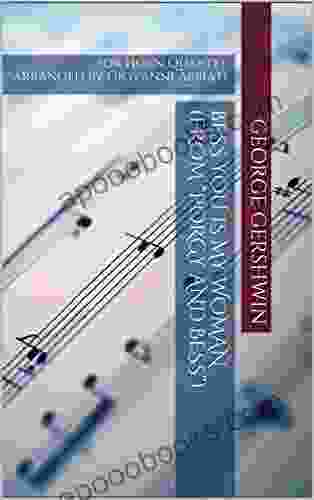African Polyphony and Polyrhythm: Unraveling the Intricacies of Musical Structure and Methodology

The vibrant and captivating music of Africa is a testament to the continent's rich cultural heritage. Among its many enchanting characteristics, polyphony and polyrhythm stand out as defining elements, creating a tapestry of mesmerizing rhythms and melodies. This article delves into the intricacies of African polyphony and polyrhythm, exploring their musical structure, cultural significance, and the fascinating methodology behind their creation.
Polyphony: A Harmonious Interplay of Voices
Polyphony, the simultaneous use of multiple independent melodic lines, is a fundamental aspect of African music. Unlike Western music, which often features a dominant melody accompanied by supporting harmony, African polyphony involves the intricate weaving of several distinct melodies, each with its own distinct rhythm and pitch contour.
4.7 out of 5
| Language | : | English |
| File size | : | 83431 KB |
| Print length | : | 700 pages |
| Screen Reader | : | Supported |
In many African societies, polyphony is deeply rooted in traditional rituals, storytelling, and social interactions. For example, the Griots of West Africa, renowned for their musical prowess, weave intricate polyphonic melodies using a combination of voice, string instruments, and percussion. The resulting tapestry of sound transports listeners to a realm of cultural storytelling and communal expression.
Polyrhythm: The Dance of Complex Rhythms
Polyrhythm, the simultaneous use of multiple independent rhythms, is another defining characteristic of African music. Unlike Western music, which typically employs a single underlying pulse, African polyrhythm features the intricate interplay of two or more contrasting rhythms, creating a kaleidoscope of rhythmic textures.
The polyrhythms of Africa are often generated through the interplay of different instruments, each playing its own distinct rhythmic pattern. For example, the Ewe people of Ghana use a combination of drums, bells, and rattles to create complex polyrhythms that drive their traditional dances and ceremonies. The resulting rhythmic interplay is both captivating and physically stimulating, inviting listeners to move and groove to the irresistible beat.
Musical Structure: A Tapestry of Interwoven Rhythms
The musical structure of African polyphony and polyrhythm is often based on intricate interlocking patterns. These patterns are created by the interplay of different rhythmic and melodic elements, each contributing to the overall musical tapestry. In many African cultures, these patterns are passed down orally from generation to generation, embodying the collective knowledge and creativity of the community.
The structural complexity of African polyphony and polyrhythm varies widely across different regions and cultures. Some societies employ simple interlocking patterns, while others develop elaborate and sophisticated systems. The Ngbaka people of the Central African Republic, for example, are known for their intricate polyphonic songs, featuring multiple vocal lines that weave in and out of each other, creating a mesmerizing sonic experience.
Methodology: Unveiling the Secrets of African Music
Understanding the intricacies of African polyphony and polyrhythm requires a specialized methodology that combines ethnomusicological research with musical analysis. Ethnomusicologists study the music of a particular culture within its social and cultural context, immersing themselves in the community to gain a deep understanding of the music's purpose, significance, and performance practices.
Musical analysis, on the other hand, involves the detailed examination of the music's structure, rhythm, and melody. By employing techniques such as transcription, rhythm analysis, and harmonic analysis, researchers can identify the underlying patterns and principles that govern African polyphony and polyrhythm.
Cultural Significance: Music as a Reflection of Society
African polyphony and polyrhythm are more than just musical techniques; they are deeply embedded in the social and cultural fabric of African societies. Music serves as a means of communication, storytelling, and community bonding. Through polyphony and polyrhythm, African musicians express their cultural identity, celebrate their history, and pass on their traditions to future generations.
For example, the polyphonic choral music of South Africa played a significant role in the anti-apartheid movement, providing a voice for the oppressed and fostering a sense of unity and resistance. Similarly, the polyrhythmic drumming of West Africa is an integral part of religious ceremonies, connecting worshippers with the divine and creating a communal trance-like experience.
African polyphony and polyrhythm are a testament to the boundless creativity and ingenuity of African musicians. Through the intricate interplay of multiple voices and rhythms, African music creates a mesmerizing tapestry of sound that transports listeners to a world of cultural expression and rhythmic enchantment. Understanding the structure and methodology of this music requires a specialized approach that combines ethnomusicological research with musical analysis, allowing us to unravel the secrets of this captivating musical tradition. As we delve deeper into the world of African polyphony and polyrhythm, we not only gain a greater appreciation for its musical beauty but also forge a deeper connection with the rich cultural heritage of Africa.
4.7 out of 5
| Language | : | English |
| File size | : | 83431 KB |
| Print length | : | 700 pages |
| Screen Reader | : | Supported |
Do you want to contribute by writing guest posts on this blog?
Please contact us and send us a resume of previous articles that you have written.
 Book
Book Novel
Novel Page
Page Chapter
Chapter Text
Text Story
Story Genre
Genre Reader
Reader Library
Library Paperback
Paperback E-book
E-book Magazine
Magazine Newspaper
Newspaper Paragraph
Paragraph Sentence
Sentence Bookmark
Bookmark Shelf
Shelf Glossary
Glossary Bibliography
Bibliography Foreword
Foreword Preface
Preface Synopsis
Synopsis Annotation
Annotation Footnote
Footnote Manuscript
Manuscript Scroll
Scroll Codex
Codex Tome
Tome Bestseller
Bestseller Classics
Classics Library card
Library card Narrative
Narrative Biography
Biography Autobiography
Autobiography Memoir
Memoir Reference
Reference Encyclopedia
Encyclopedia Konrad Adenauer
Konrad Adenauer Susan P Robbins
Susan P Robbins Rickie Lee Jones
Rickie Lee Jones V J Manzo
V J Manzo Terri Brisbin
Terri Brisbin Robert Bailey
Robert Bailey Shinichi Fukuda
Shinichi Fukuda Voddie Baucham Jr
Voddie Baucham Jr Shauna L Tominey
Shauna L Tominey Rogers Sek
Rogers Sek Jaci Rae
Jaci Rae Timothy Pyke
Timothy Pyke Steve Covey
Steve Covey Susan Wiggs
Susan Wiggs Stefan Zweig
Stefan Zweig Julia Quinn
Julia Quinn Stephen Gleasner
Stephen Gleasner Kris Saknussemm
Kris Saknussemm Tony Milne
Tony Milne Stephanie Dray
Stephanie Dray
Light bulbAdvertise smarter! Our strategic ad space ensures maximum exposure. Reserve your spot today!

 Colt SimmonsUnlock the Beauty of Gladiolus: The Essential Guide to Cultivating Stunning...
Colt SimmonsUnlock the Beauty of Gladiolus: The Essential Guide to Cultivating Stunning...
 Jamie BellUnlock Your Journey to Hand Surgery Success: Dive into the Comprehensive Hand...
Jamie BellUnlock Your Journey to Hand Surgery Success: Dive into the Comprehensive Hand... Jayson PowellFollow ·19.7k
Jayson PowellFollow ·19.7k Herbert CoxFollow ·10.3k
Herbert CoxFollow ·10.3k Charles DickensFollow ·3.9k
Charles DickensFollow ·3.9k Jayden CoxFollow ·6.7k
Jayden CoxFollow ·6.7k Joseph FosterFollow ·7.3k
Joseph FosterFollow ·7.3k Steven HayesFollow ·6k
Steven HayesFollow ·6k Lucas ReedFollow ·19.1k
Lucas ReedFollow ·19.1k Isaiah PowellFollow ·9.5k
Isaiah PowellFollow ·9.5k

 Harry Cook
Harry CookRape Blossoms and White Sky: A Floral Symphony of...
A Kaleidoscope of Colors...

 Vic Parker
Vic ParkerThe Passion of Jovita Fuentes: Unveiling the...
Immerse yourself in the...

 Cormac McCarthy
Cormac McCarthySinners and Saints: A Dark New Adult High School Bully...
Sinners and Saints is...
4.7 out of 5
| Language | : | English |
| File size | : | 83431 KB |
| Print length | : | 700 pages |
| Screen Reader | : | Supported |














